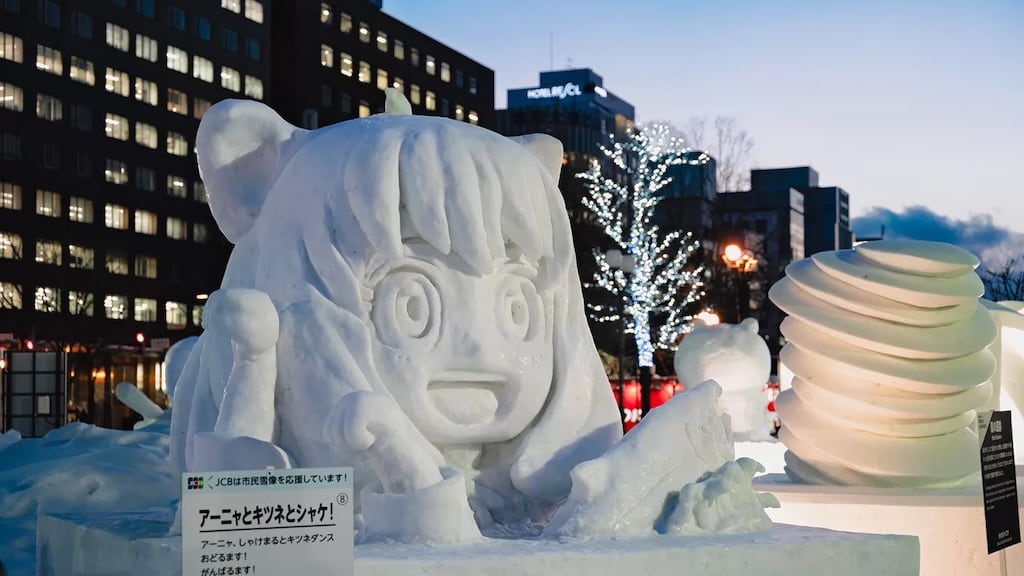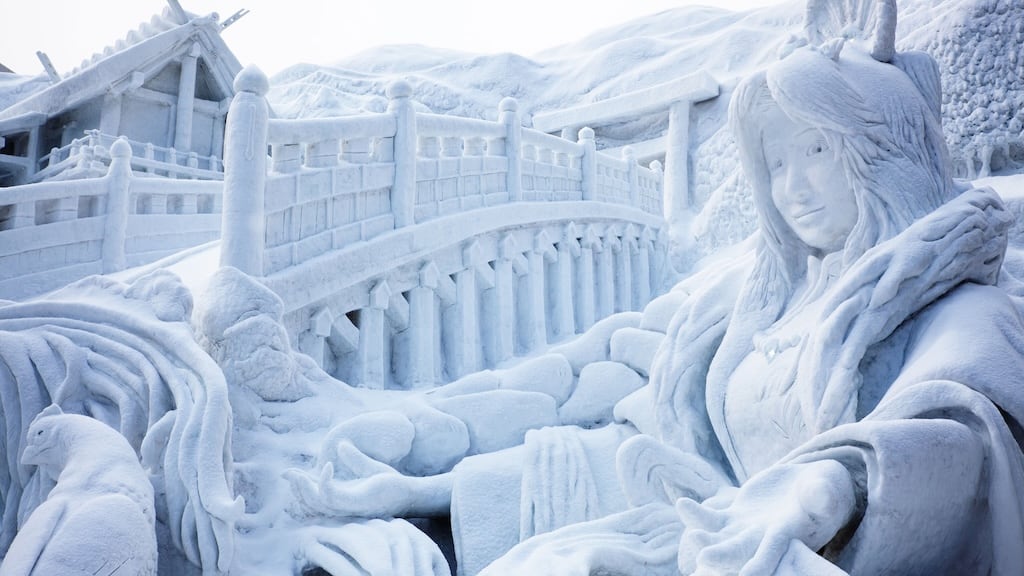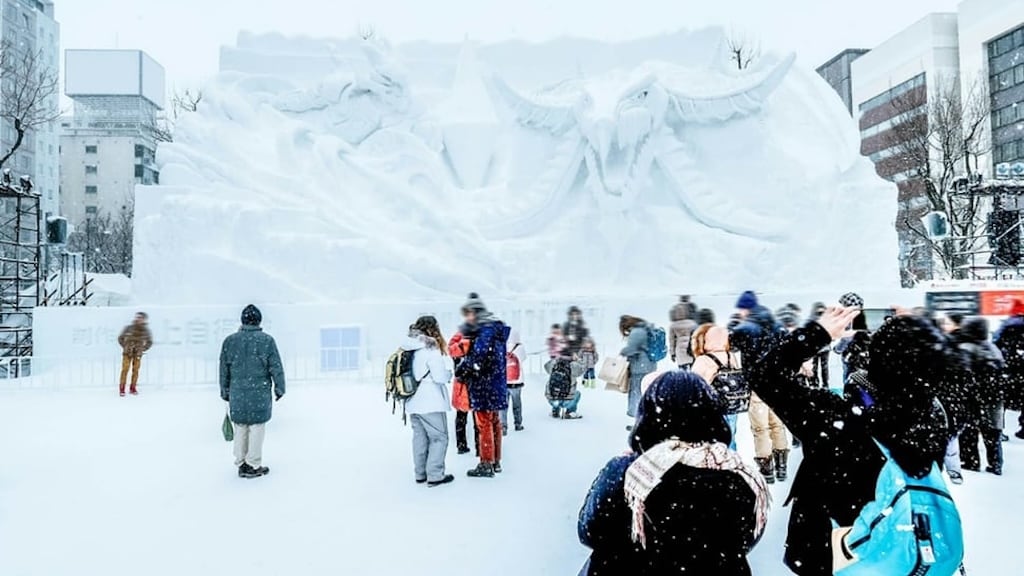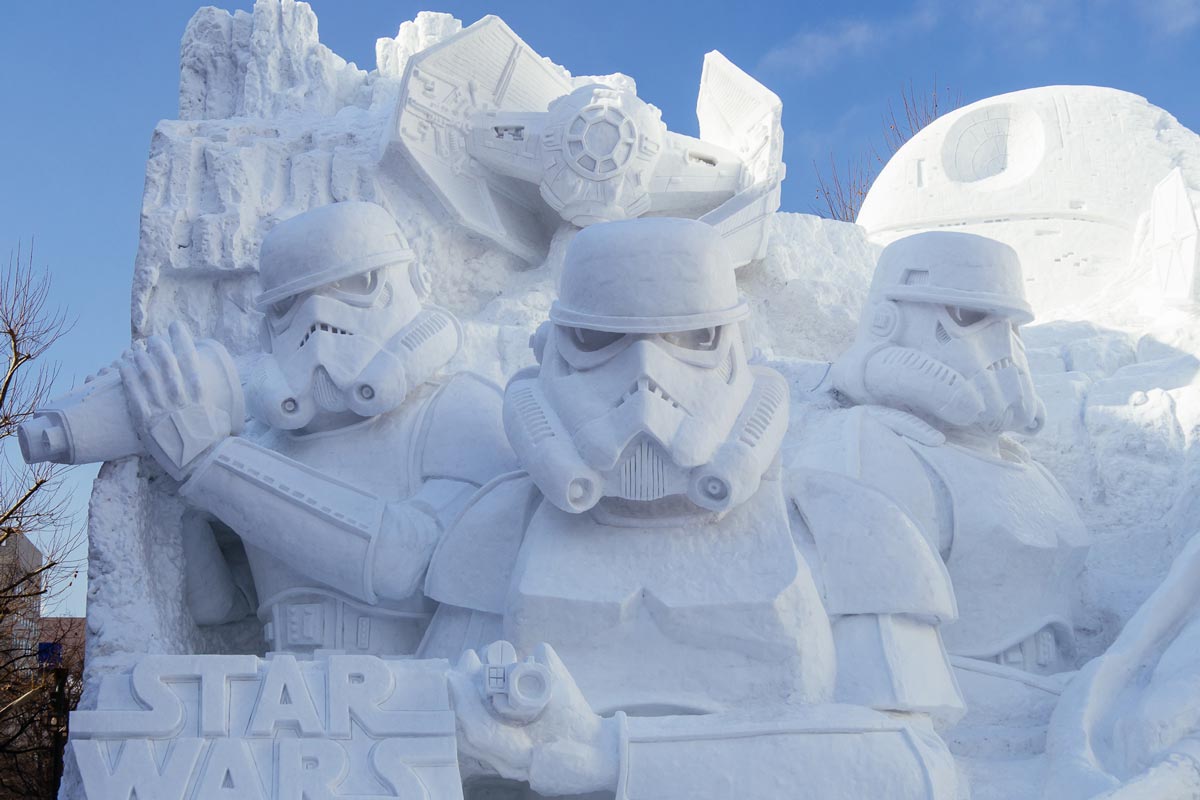Japan's Winter Wonderland
Every February, the northern Japanese city of Sapporo, nestled on the island of Hokkaido, transforms into a sparkling snow-covered dreamscape during the internationally acclaimed Sapporo Snow Festival.
Renowned for its colossal snow and ice sculptures, the festival exemplifies Japan's winter charm and artistic precision. From anime icons to global landmarks carved in ice, the event draws over two million visitors annually, making it one of Asia's largest winter festivals.


Historical Background
The festival's origins date back to 1950, when a group of local high school students created six modest snow statues in Odori Park. Their efforts captured the public's imagination, evolving rapidly with contributions from Japan's Self-Defense Forces by the mid-1950s, who brought scale and technical expertise to the creations.
Recognition skyrocketed in 1972, when Sapporo hosted the Winter Olympics, turning the festival into an international sensation. Since then, it has not only remained a national treasure but has become a platform for global artistic collaboration, including the International Snow Sculpture Contest, where teams from across the world compete live in the heart of winter.
Main Festival Locations
The Sapporo Snow Festival is held across three key sites, each offering a distinctive atmosphere and range of attractions:
1. Odori Park Site
The symbolic heart of the festival, this 1.5 km stretch in central Sapporo features:
- Giant snow sculptures, some exceeding 15 meters in height
- Nighttime illuminations that transform sculptures into glowing marvels
- Food stalls with Hokkaido delicacies
- Stages for live music, cultural performances, and light shows
2. Susukino Site
Sapporo's bustling entertainment district focuses on ice sculptures, many of which are interactive and hyper-detailed:
- Romantic Ice Sculpture Illumination at night
- Sculptures themed around animals, fantasy, and daily life
- Some installations allow guests to sit or touch the artwork
3. Tsudome Site
A family-friendly venue ideal for children and active fun:
- Giant snow slides and snow rafting
- Snowball fight zones and igloos
- Indoor rest areas, food courts, and heated lounges
Traditional Customs and Cultural Integration
Though modern in origin, the Sapporo Snow Festival beautifully intersects with Japanese cultural elements:
- Cuisine: Savor local delights such as Hokkaido crab, miso ramen, grilled scallops, and warm amazake.
- Dress: Attendees wear layered winter gear or traditional attire like yukigasa, and on themed weekends, some dress in cosplay to match anime-inspired snow sculptures.
- Performances: Witness taiko drumming, traditional dance, and local choir groups on sculpted snow stages.
- Illuminations: Large sculptures are often turned into projection-mapped canvases for mesmerizing light and sound shows.
What to Expect
Getting There
- Access: Fly into New Chitose Airport, then take the train to downtown Sapporo
- Local Transport: Subway and shuttle buses connect festival zones seamlessly
Accommodations
- Book early—hotels fill up fast!
- Best areas to stay: Susukino and Odori, for proximity to events and attractions
Travel Tips
- Dress in warm layers; expect temps around -10°C
- Bring a camera with low-light performance
- Don't miss:
- Hokkaido milk soft-serve
- Hot sake at night
- International Sculpture Contest at Odori
Extend Your Trip
Why not explore nearby highlights while in Hokkaido?
- Niseko: For world-class powder skiing
- Otaru Canal: A romantic historic district lit by lanterns
- Jozankei Onsen: Soak in traditional Japanese hot springs amid snow


Conclusion
The Sapporo Snow Festival is not just a celebration of winter—it's a canvas of imagination, cultural pride, and community spirit.
Whether you're mesmerized by towering snow sculptures, immersed in traditional performances, or sliding down a hill of powder with a laugh, this festival promises a truly unforgettable experience in the heart of Japan's winter capital.